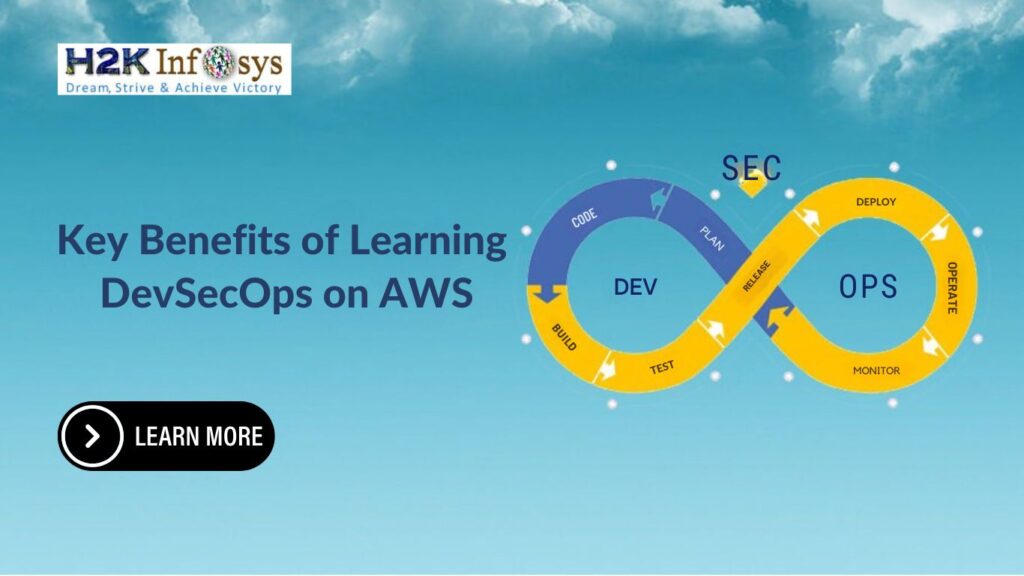Implementing a functional partner portal is essential for strengthening partner connections and expanding a firm’s reach. The Salesforce Partner Portal is a powerful platform that allows businesses to create customized, collaborative partner portals. To unlock its full potential and ensure a seamless implementation, it is crucial to follow best practices tailored to your business objectives. By doing so, you can maximize the benefits of this sophisticated technology and foster stronger relationships with your partners. Our Salesforce admin training can provide further insights into effectively utilizing this platform.
Salesforce offers a range of automation tools, such as workflow rules and process builders, to streamline operations. Automating repetitive tasks, including lead assignments, deal registrations, and approvals, enhances efficiency while minimizing manual errors. These automation features also ensure timely follow-ups, keeping your partners engaged and productive. Incorporating these tools into your partner portal can significantly improve the overall experience for your partners, driving better collaboration and results.
A successful partner portal implementation doesn’t stop at deployment. Providing ongoing support is critical for addressing challenges, introducing new features, and collecting valuable feedback. Establishing a support system within the portal ensures partners can troubleshoot issues and stay informed about updates. This continuous support not only strengthens partner relationships but also ensures long-term success by adapting to evolving needs and maintaining partner satisfaction.
Why Salesforce Admin Training Is Essential
Salesforce Admin training provides a comprehensive understanding of the Salesforce platform, focusing on its features and functionalities that are critical to managing and maintaining the Partner Portal. One of the first things you’ll learn is user setup and management, which is key to ensuring that each partner has the correct level of access and permissions. Admins are trained to create custom profiles and roles, ensuring that sensitive company data is protected while providing partners with the tools and resources they need to succeed.
Security is another critical area covered in Salesforce Admin training. You’ll learn how to configure security settings that safeguard both your data and your partners’ information. Salesforce offers robust security options, including two-factor authentication, data encryption, and field-level security. Through training, you’ll understand how to implement these measures effectively, reducing the risk of data breaches and unauthorized access.
Unlock the Power of Automation and Efficiency
Another significant aspect of Salesforce Admin training is learning how to automate tasks and processes that streamline workflows. Salesforce’s powerful automation tools, such as Process Builder and Flow, can be configured to automatically assign leads to partners, send notifications when milestones are reached, or trigger specific actions based on certain criteria. By mastering these tools, you can reduce manual work, increase efficiency, and ensure that your partners are working with accurate and up-to-date information in real time.
Data Management and Reporting Skills
Salesforce Admin training also teaches you how to manage data within the platform effectively. Clean and accurate data is the foundation of any successful Partner Portal. You’ll learn how to organize data, import and export records, and maintain a clear structure that helps both your business and partners make informed decisions. Additionally, you will develop the ability to create customized reports and dashboards that provide insights into partner performance, sales trends, and deal progress, allowing you to track key metrics and optimize collaboration efforts.
Customization for Your Unique Needs
Every business has different needs when it comes to managing partners, and Salesforce Admin training provides you with the skills to customize the portal accordingly. From creating custom objects to modifying page layouts and setting up custom fields, admins are empowered to tailor the portal to meet specific business goals and partner requirements. This flexibility ensures that your portal provides a seamless user experience while supporting your strategic objectives.
Continuous Support and Maintenance
Managing a Salesforce Partner Portal is not a one-time effort; it requires ongoing support and maintenance. Salesforce Admin training prepares you to handle day-to-day portal management tasks, from troubleshooting issues to optimizing performance as your partner network grows. You’ll also learn how to monitor system updates and new features introduced by Salesforce, ensuring that your portal remains up-to-date with the latest tools and functionalities.
In conclusion, Salesforce Admin training is essential for businesses looking to maximize the value of their Partner Portal. By equipping yourself or your team with the right skills, you can ensure the smooth operation of the portal, protect data, automate processes, and customize the experience to better serve your partners. Ultimately, this training empowers you to take full advantage of Salesforce’s capabilities, driving growth and efficiency across your partner relationships.
Monitor and Measure Performance
Understanding Salesforce Partner Portals
Salesforce Partner Portals help enterprises collaborate and communicate with their external partners. Partner portals act as dedicated gateways, allowing secure access to partner organizations’ resources, information, and tools. They provide for seamless data sharing, streamlined workflows, and effective management of partner relationships.
Here’s how to effectively use the Salesforce Partner Portal:
Enhanced Data Sharing with Salesforce Partner Portal
Leverage the Salesforce Partner Portal to share key CRM data and actionable insights seamlessly with your partners. This ensures that all stakeholders, including internal teams and external collaborators, stay on the same page. Enhanced data sharing fosters transparency and promotes more informed decision-making.
Collaborative Deal Management via the Salesforce Partner Portal
The Salesforce Partner Portal empowers your teams to collaborate with partners on prospects and deals. By working together within a centralized platform, you can streamline deal management, improve communication, and significantly increase success rates.
Real-Time Lead and Opportunity Management in Salesforce Partner Portal
With the Salesforce Partner Portal, managing leads, opportunities, and accounts becomes more efficient. It enables partners to make quick updates, access real-time information, and revise strategies instantly, driving better outcomes.
Advanced Channel Sales Forecasting with Salesforce Partner Portal
The Salesforce Partner Portal equips you with robust forecasting tools to predict channel sales accurately. By analyzing partner performance, you can uncover success patterns, identify growth opportunities, and adapt your channel strategy proactively.
Streamlined Channel Marketing through the Salesforce Partner Portal
Coordinate and execute marketing activities effectively across various channels using the Salesforce Partner Portal. This ensures consistent messaging and alignment of strategies, resulting in a more cohesive brand presence.
Comprehensive Partner Education and Onboarding in the Salesforce Partner Portal
The Salesforce Partner Portal provides extensive training resources, onboarding tools, and educational materials for your partners. This ensures they are well-prepared to represent your brand, engage with your operations, and drive mutual success.
By utilizing the Salesforce Partner Portal, businesses can unlock the full potential of their partner relationships, driving growth, enhancing collaboration, and achieving greater efficiency.
Main Salesforce Partner Portal Features and Functionalities
Salesforce partner portals address all of the ongoing developments in the partner ecosystem. It is jam-packed with useful components, capabilities, and features that help to improve cooperation, streamline operations, and maximize partner connections. Here are some of its key standard features:
Preconfigured Templates
Use ready-to-use templates to save time, cut development costs, and speed up the implementation of your Salesforce partner community. These templates are designed to satisfy a variety of requirements and scenarios, allowing for a quick start.
Customization and Branding
Utilize the platform’s drag-and-drop tools and code builders to easily customize and brand your portal. This versatility enables you to construct unique pages, add drag-and-drop components, and provide tailored experiences to distinct partner segments.
Registration
Implement a registration feature to improve how resellers register deals by automating the submission and approval processes. This not only provides early pipeline awareness but also helps with channel conflict management and revenue tracking.
Lead Assignment and Distribution
Choose to assign leads directly to partners or allow partners to manage their lead queues. The lead inbox component allows for direct lead transfer, while automatic assignment rules ensure leads are allocated according to specific criteria.
Analytics
Providing your partners with powerful dashboards, reporting, analytics, and business intelligence tools is essential for enabling them to make data-driven decisions that contribute to the success of both your business and theirs. These tools give partners access to critical information about sales performance, lead conversion, customer trends, and more, all of which are fundamental to driving growth, improving decision-making, and fostering long-term business expansion. Additionally, partners can use sales forecasts generated through analytics tools to predict future revenue, helping them make strategic decisions about resource allocation, staffing, and market focus.
Training and Certification Modules
Incorporate training and certification programs right into your partner portal. This feature can keep partners informed about your products or services, ensuring they fulfill your quality requirements and are well-prepared to sell or support them efficiently.
Support and Collaboration Tools
Include support tools and collaborative elements such as forums, knowledge bases, and direct chat options. These tools enable real-time communication, issue-solving, and knowledge exchange between partners and your organization.
Seamless integrations
Highlight the Salesforce Partner Portal’s seamless integration with other Salesforce products and external systems. This link offers a consistent experience and broadens the portal capabilities, allowing partners to access extensive tools and data from a single platform.
5 Best Practices to Minimize Implementation Risk
Implementing a partner portal can be a complicated procedure. To reduce implementation risks and ensure success, consider these best practices:
Define goals and KPIs.
Set Clear KPIs to Measure Success
Establish key performance indicators (KPIs) aligned with business objectives to measure the partner portal’s success, focusing on partner engagement, productivity, and revenue. Examples include active partners, deal registration rate, lead conversion rate, and onboarding time. KPIs guide implementation priorities and allow performance monitoring, such as simplifying workflows for faster deal registration or enhancing lead distribution for better conversion rates.
Prioritizing Focus Areas
With clear goals, use cases, and KPIs, prioritize features to deliver measurable results. For instance, prioritize an intuitive interface and self-service resources for partner engagement or a streamlined registration system to boost deal registrations.
Engage with Your Partners to Understand Their Needs
To guarantee that your salesforce partner portal matches your partners’ individual needs and interests, it is essential that you communicate with them. Seek their opinion and incorporate their feedback into the implementation process. By actively incorporating your partners, you can personalize the partner portal to their specific needs, increasing adoption and improving their entire experience.
Begin small and continue to build.
Instead of aiming to cover all capabilities and use cases at once, it is best to start small and roll out an initial version of the salesforce partner portal. Collect feedback from partners and iterate according to their needs and preferences. Using an iterative approach allows you to make constant changes and guarantee that the partner portal improves following partner requirements over time.
Personalize Content
Use the audience targeting function in Experience Cloud to give a personalized experience for different partners who visit the same salesforce partner portal. Create many page variations and allocate them to certain audiences depending on geography, permission, profile, and other variables. This method avoids overwhelming partners with useless information while ensuring they see content that is tailored to their needs.
Use AppExchange Apps to Enhance Functionality
Rather than starting from scratch, use current AppExchange solutions to improve the functionality and capabilities of your salesforce partner site. These apps are specifically created to supplement the portals, saving time, reducing development costs, and ensuring a more efficient and effective implementation process. Consider using learning management systems, partner directories, co-branding solutions, and onboarding apps to improve the partner experience and boost success.
Conclusion Building an efficient partner portal is critical for businesses trying to establish partnerships and broaden their reach. Salesforce Partner Portal is a powerful solution with a wide range of features and functionalities to help businesses collaborate and communicate with their partners. Organizations can construct bespoke and collaborative salesforce partner portals that generate success by adhering to best practices and exploiting the platform’s capabilities. Remember to set clear goals, collaborate with partners, start small and iterate, personalize content, and use AppExchange apps to improve functionality. You can learn more by checking out our Salesforce course online.































One Response